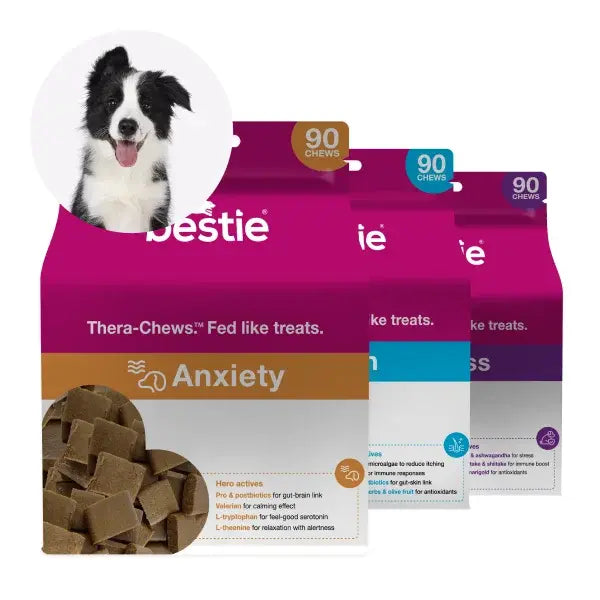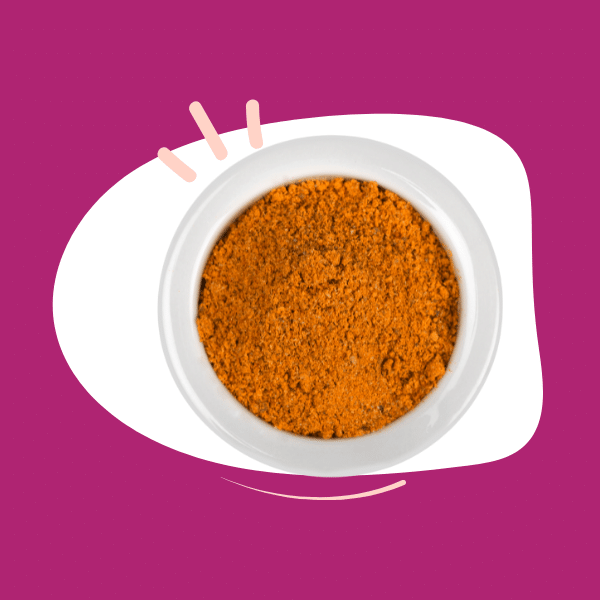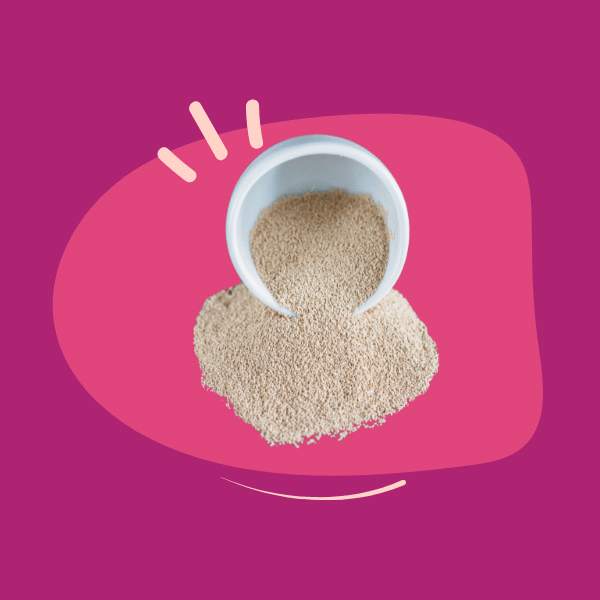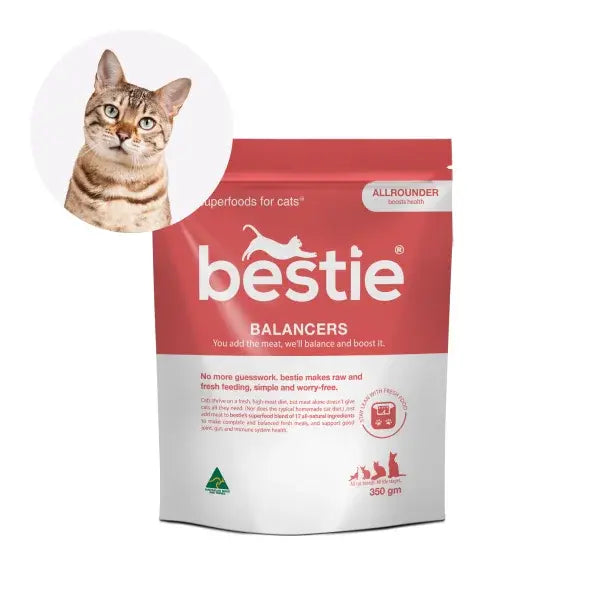In a nutshell:
-
A healthy gut microbiome can reduce inflammation, boost the immune system, improve digestion, and even prevent anxiety and mood disorders.
-
The gut-brain axis connects digestive and mental health, mediated by a healthy microbiome.
-
Not all probiotics are functional, so It’s best to use probiotics backed by research.
-
Probiotics can be combined with both pre- and postbiotics to support gut health.
-
Probiotics can help prevent dysbiosis and restore balance within the gut microbiome.
Did you know...?
The global probiotic market is expected to reach AUD $160 billion by 2030, nearly double its current value (Research, 2022). With this level of growth comes misinformation and a nutraceutical market flooded with products lacking credibility.
Adding to this increased demand, a survey from the University of Otago in New Zealand found most doctors were unable to define a probiotic clearly (Schultz et al., 2011). This also extends to medical professionals in Australia.
So, let’s bring some clarity to this topic first.
Probiotics are living microorganisms that benefit the host when consumed. This “host” can be humans, farm animals, and our pets.
Veterinarians often suggest probiotics to support antibiotic therapy and gastrointestinal upset, but recent studies show probiotics also improve your pet’s metabolism, educate their immune system, protect against harmful bacteria, and even prevent anxiety and mood disorders (Pilla & Suchodolski, 2019).
Let’s look at the research and dive into the world of probiotics.
What is “good gut health” in dogs anyway?
Good gut health is more than just healthy-looking poo.
Trillions of bacteria, viruses, archaea, and eukaryotes work together inside your pet’s digestive system. We call this group of living organisms the “gut microbiome”, and when in balance, this microbial community supports nearly every body function.
Regardless of the inherent variation between dogs, a healthy microbiome is dominated by a core group of Fusobacterium, Bacteroidetes, and Firmicutes. We’ll talk about which beneficial species these classes of bacteria include in future articles, but since we’re dealing with trillions of organisms, we’re more interested in the proportion and abundance of these bacteria rather than their specific species (Pilla & Suchodolski, 2019).
Your pet relies on a symbiotic relationship with its microbiome. This means that both your pet and the organisms making up the microbiome benefit by working together. Every time your dog eats, the microbiome is also being fed—hence the importance of feeding your pet a high-quality and balanced diet. We have a whole article dedicated to diet here.
But, how does a healthy microbiome benefit your dog?
As carbohydrates, fats, and proteins enter the digestive system, the microbiome utilises a fraction of these nutrients to feed themselves and produce byproducts that benefit your dog. This mutual relationship provides our pets with essential vitamins like K and B, as well as a supply of short-chain fatty acids (SCFAs) that directly nourish colonocytes lining the large intestine. This healthy give-and-take relationship is what we term “symbiosis” (Schmitz & Suchodolski, 2016).
What does it mean to have a healthy microbiome?
A healthy microbiome means balance.
Overpopulation of certain bacterial species, especially after taking antibiotics, disrupts the guts microbial population. Studies have shown it’s challenging to restore the microbiome after it becomes imbalanced, leading to dysbiosis.
The negative effects of dysbiosis aren’t only specific to digestion but also connected with systematic diseases like obesity, cancer, and neurological disorders in dogs.
Since the digestive system of cats and dogs is shorter than humans, veterinarians can reliably use poo samples to identify which organisms make up the gut microbiome. In humans, it’s more accurate to take a sample of the mucosal lining.
By collecting poo samples from healthy dogs, veterinarians have created the Dysbiosis Index using genetic sequencing to determine the different bacterial species and their abundance in dog poo. Not only does this provide a standard for what a healthy microbiome should look like, but it’s also helpful to track the microbiome’s health over time and in response to treatment.
Gastrointestinal dysfunction, like diarrhoea, is the most obvious sign of dysbiosis, and numerous studies have shown significant differences in gut microbial diversity using the Dysbiosis Index (Pilla & Suchodolski, 2019).
How does the gut affect your dog’s health?
The gut has a mind of its own, literally. (That’s one of the reasons the probiotic blends we use in bestie gummy chew supplements are called 2nd Brain blends!)
Surrounding the gut lies a network of nerves communicating between different sections of the digestive system. This is called the enteric nervous system (ENS) and it allows for efficient digestion and proper absorption of nutrients to keep your dog healthy. Although the ENS can function without any input from the brain, there’s still a complex relationship known as the gut-brain axis that needs to be maintained for optimal health.

(From https://www.ncbi.nlm.nih.gov/pmc/articles/PMC4040776/)
Imagine your dog’s gut has become compromised by a virus or antibiotic treatment. Suddenly, the good bacteria lining the digestive tract can’t properly metabolise nutrients, like SCFAs, that the digestive system relies on.
SCFAs like acetate, propionate, and butyrate can provide as much as 7% of the metabolic energy that your dog requires (and cats to a lesser extent). Among these, butyrate is the preferred energy source for more than 90% of colonocytes, and it’s needed to maintain colon integrity.
In cases of inflammatory bowel disease and chronic diarrhoea, colonocytes start to let go of neighbouring cells, impairing the colon’s ability to regulate nutrient absorption. Many studies have shown that increasing butyrate levels in the colon can improve colonocyte permeability, restore tight junctions (adhesion proteins), and decrease inflammatory molecules within the gut (Suchodolski, 2013).
So, if your dog has problems with digestion and absorption of nutrients, this will cascade into complications between the gut-brain axis and your pet’s overall health.
How an unhealthy gut creates more problems than just diarrhoea
Let’s got back to the gut-brain axis.
The gut microbiome can stimulate the cells that line the gut to produce neurotransmitters such as GABA, serotonin, melatonin, histamine and acetylcholine. Not only can these molecules travel throughout the body and affect distant organs, but they also directly impact the emotional and cognitive centres of the brain.
For example, here are some common conditions that are connected with gut health:
-
Atopic dermatitis (itchy skin)
Microbes are everywhere, and the digestive system is often the first to be exposed to harmful pathogens. Fortunately, the gut microbiome is connected with the immune system. Probiotics have already proven helpful in dogs genetically predisposed to atopic dermatitis, where they found decreased allergen-specific IgE for up to 3 years after treatment with Lactobacillus rhamnosus strain GG of probiotics (Marsella et al., 2012).
Emphasising the importance of a healthy gut in disease prevention, a study comparing poo samples in patients affected by atopic dermatitis found differences in bacterial composition and diversity compared to healthy individuals (Craig, 2016).
-
Arthritis
Chronic inflammation in joints leads to arthritis, and preventing this damage requires a balance between pro- and anti-inflammatory molecules.
One of the most important inflammatory molecules is TNF-α and studies have shown its overexpression can lead to cartilage damage. Fortunately, in vitroexperiments showed a strain of Lactobacillus reuteriinhibits TNF-α production (Lin et al., 2009).
Other studies looking at Lactobacillus paracasei (Vitetta et al., 2013) and acidophilus(Amdekar et al., 2014) also found these probiotic strains help maintain balance during inflammation, helping prevent the onset of arthritis. With a growing number of studies highlighting the importance of probiotics and gut health, it’s becoming apparent that functional probiotics can drastically improve your pet’s health.
-
Anxiety & Cognitive Function
The nervous system communicates by releasing neurotransmitters. The microbiome and epithelial cells within the gut work together to provide nearly 95% of the body’s serotonin—a neurotransmitter (Appleton, 2018). Not only does this serotonin act directly on the digestive tract to stimulate motility, but it also sends information back to the brain.
Several studies have demonstrated that decreased serotonin production is associated with impaired mood, behaviour, memory, and anxiety disorders (Lin et al., 2014). The benefits of gut health on anxiety have been so profound that even Purina has developed a probiotic containing bifidobacterium that helps reduce anxiety in dogs.
When it comes to ageing, studies have shown microbial diversity decreases with time and has been associated with decreased cognitive function. When comparing the microbiome composition of bats, researchers found the microbial diversity of healthy old and young bats was similar (Hughes et al., 2018). Although the ageing microbiome in dogs is yet to be studied, similar results have been confirmed in other species and indicate a link between healthy ageing, cognitive function, and the gut microbiome.
What are probiotics, and where do they come from?
We briefly mentioned this above, but probiotics are living microorganisms that can provide your pet with health benefits once they enter the digestive tract.
But, where do these probiotics come from, and how are probiotics made?
The moisture, warmth, and constant supply of food make the gut an ideal environment for bacterial growth. So naturally, most probiotics come from the gut of healthy animals by collecting poo samples, isolating bacterial strains, and growing these strains in the lab.
Probiotics usually come as a powder that can be sprinkled on top of your dog’s food. Once your pet eats the probiotic, things start to get interesting.
For a probiotic to be functional, it has to pass the stomach's acidic environment before it can benefit the intestines. Some probiotics can adhere to the gut lining, colonise the region, and even remain in the gut after you’ve stopped giving probiotics. On the other hand, some strains temporarily benefit your pet’s metabolism and immune function without colonising—particularly helpful to restore the gut microbiome if your dog’s experiencing an upset stomach (Schmitz & Suchodolski, 2016).
As the probiotic colony grows within the gut, they compete with the pathogenic bacteria and take over more intestinal space. This is exactly what we want.
We also start to see probiotics produce novel enzymes, antimicrobials, and antioxidants. For example, we’ve added Bacillus coagulans into our ALLROUNDER balancing supplement as it’s an essential strain of probiotic that can produce α-galactosidase. This enzyme is involved in digesting "non-digestible" fibre molecules–something your dog can't make on its own (Aulitto et al., 2021). Without such enzymes, nutrients would remain inaccessible and removed as waste.
The difference between probiotics and prebiotics
While probiotics are living bacteria, prebiotics are what these bacteria can feed on to support their growth.
Usually, these are fermentable fibres that gut microbes feed on to produce SCFAs. This is particularly important considering the popularity of high-protein BARF diets with upwards of >50% protein content. Since kibble diets are primarily made of carbohydrates, transitioning to a BARF diet requires a shift in the gut microbiome, and prebiotics help accommodate this diet change.
For example, Firmicutes are a group of gut bacteria known to digest plant-based carbohydrates found in kibble. As we decrease the carbohydrate content, the Firmicute population in the gut begins to decrease, while Fusobacteria and Proteobacteria take on a more significant role in protein metabolism (Pilla & Suchodolski, 2019). Prebiotics support this transition, so we’ve included them in our ALLROUNDERbalancing supplement.
And, what about postbiotics?
Instead of using live bacteria, postbiotics are non-living microorganisms that benefit the host (Salminen et al., 2021). This typically means heat-treating probiotics through a tyndallisation process that kills the probiotic but preserves its structural components and metabolic byproducts.
Since feeding probiotics can (in rare cases) pose a risk to immunocompromised pets, postbiotics provide an alternative approach to support gut health and strengthen the intestinal immune barrier. Clinically, postbiotics have been helpful in cases of bloating and diarrhea, but have also been promising against skin and respiratory allergies (Piqué et al., 2019).
Using a combination of pre-, pro-, and postbiotics, we can help support our pets with a healthy gut.
Why should you add probiotics to your dog’s diet?
A healthy dog has a core group of Fusobacterium, Bacteroidetes, and Firmicutes living inside of its gut. Different triggers like stress, a change in diet, and infection can lead to imbalances in their microbiome.
This is why we can use probiotics as a “health boost”.
One of the most critical periods in a dog’s life is at weaning, when they’re separated from their mom. Since the immune system hasn’t fully developed, these puppies are susceptible to a long list of infections that can have serious implications.
When puppies were fed a strain of E. faeciumwith their diet for 10 months, fecal and blood samples showed an increased immune to receiving a canine distemper vaccine (Benyacoub et al., 2003). This suggests probiotics can be used as preventative medicine and provide new opportunities to improve pet nutrition.
Another form of preventative medicine is Wellness Exams; veterinarians recommend these to monitor your pet’s health through a physical exam and bloodwork. Using a different strain of E. faeciumthan above, the bloodwork results in 8 healthy dogs showed a decrease in total fats and proteins, as well as cholesterol levels returning to normal values after one week of oral probiotic treatment (Marcináková et al., 2006). These results suggest probiotics can have an extensive role in pet health that can be assessed and monitored through routine bloodwork.
We’ve just begun to scratch the surface here. In future articles, we’ll talk more about the benefits of probiotics and how they can benefit your dog’s immune system, digestion,
In summary
As our understanding of the microbiome increases, pet parents have new opportunities to improve their own health, and that of their pets.
Fortunately, probiotics provide a practical approach to preventative medicine that is easy for any pet parent to adopt. We’re not just talking about digestive health here, but everything from systemic diseases to behavioural disorders!
And with the number of credible studies continuing to grow, we can expect probiotics to become a staple in pet diets and unique tool in veterinary medicine.
Ash Sadri

Ash is a Canadian veterinary student studying in Croatia. Before deciding to become a vet, Ash completed his Masters degree at the University Of Western Ontario where he specialized in cancer stem cells research. Since then, he’s been working as a veterinary technician and has special interests in animal nutrition and surgical procedures!
References
Amdekar, S., Singh, V., Kumar, A., Sharma, P., & Singh, R. (2014). Lactobacillus acidophilus Protected Organs in Experimental Arthritis by Regulating the Pro-inflammatory Cytokines. Indian J Clin Biochem, 29(4), 471-478. https://doi.org/10.1007/s12291-013-0396-y
Appleton, J. (2018). The Gut-Brain Axis: Influence of Microbiota on Mood and Mental Health. Integr Med (Encinitas), 17(4), 28-32.
Aulitto, M., Strazzulli, A., Sansone, F., Cozzolino, F., Monti, M., Moracci, M., . . . Contursi, P. (2021). Prebiotic properties of Bacillus coagulans MA-13: production of galactoside hydrolyzing enzymes and characterization of the transglycosylation properties of a GH42 β-galactosidase. Microb Cell Fact, 20(1), 71. https://doi.org/10.1186/s12934-021-01553-y
Benyacoub, J., Czarnecki-Maulden, G. L., Cavadini, C., Sauthier, T., Anderson, R. E., Schiffrin, E. J., & von der Weid, T. (2003). Supplementation of food with Enterococcus faecium (SF68) stimulates immune functions in young dogs. J Nutr, 133(4), 1158-1162. https://doi.org/10.1093/jn/133.4.1158
Craig, J. M. (2016). Atopic dermatitis and the intestinal microbiota in humans and dogs. Vet Med Sci, 2(2), 95-105. https://doi.org/10.1002/vms3.24
Hughes, G. M., Leech, J., Puechmaille, S. J., Lopez, J. V., & Teeling, E. C. (2018). Is there a link between aging and microbiome diversity in exceptional mammalian longevity? PeerJ, 6, e4174. https://doi.org/10.7717/peerj.4174
Lin, P. W., Myers, L. E., Ray, L., Song, S. C., Nasr, T. R., Berardinelli, A. J., . . . Neish, A. S. (2009). Lactobacillus rhamnosus blocks inflammatory signaling in vivo via reactive oxygen species generation. Free Radic Biol Med, 47(8), 1205-1211. https://doi.org/10.1016/j.freeradbiomed.2009.07.033
Lin, S. H., Lee, L. T., & Yang, Y. K. (2014). Serotonin and mental disorders: a concise review on molecular neuroimaging evidence. Clin Psychopharmacol Neurosci, 12(3), 196-202. https://doi.org/10.9758/cpn.2014.12.3.196
Marcináková, M., Simonová, M., Strompfová, V., & Lauková, A. (2006). Oral application of Enterococcus faecium strain EE3 in healthy dogs. Folia Microbiol (Praha), 51(3), 239-242. https://doi.org/10.1007/BF02932129
Marsella, R., Santoro, D., & Ahrens, K. (2012). Early exposure to probiotics in a canine model of atopic dermatitis has long-term clinical and immunological effects. Vet Immunol Immunopathol, 146(2), 185-189. https://doi.org/10.1016/j.vetimm.2012.02.013
Pilla, R., & Suchodolski, J. S. (2019). The Role of the Canine Gut Microbiome and Metabolome in Health and Gastrointestinal Disease. Front Vet Sci, 6, 498. https://doi.org/10.3389/fvets.2019.00498
Piqué, N., Berlanga, M., & Miñana-Galbis, D. (2019). Health Benefits of Heat-Killed (Tyndallized) Probiotics: An Overview. Int J Mol Sci, 20(10). https://doi.org/10.3390/ijms20102534
Research, G. V. (2022). Probiotics Market Size Worth $111.21 Billion By 2030. https://www.grandviewresearch.com/press-release/global-probiotics-market#
Salminen, S., Collado, M. C., Endo, A., Hill, C., Lebeer, S., Quigley, E. M. M., . . . Vinderola, G. (2021). The International Scientific Association of Probiotics and Prebiotics (ISAPP) consensus statement on the definition and scope of postbiotics. Nat Rev Gastroenterol Hepatol, 18(9), 649-667. https://doi.org/10.1038/s41575-021-00440-6
Schmitz, S., & Suchodolski, J. (2016). Understanding the canine intestinal microbiota and its modification by pro-, pre- and synbiotics - what is the evidence? Vet Med Sci, 2(2), 71-94. https://doi.org/10.1002/vms3.17
Schultz, M., Baranchi, A., Thurston, L., Yu, Y. C., Wang, L., Chen, J., . . . Herbison, P. (2011). Consumer demographics and expectations of probiotic therapy in New Zealand: results of a large telephone survey. N Z Med J, 124(1329), 36-43.
Suchodolski, J. (2013). Gastrointestinal Microbiota. Canine and Feline Gastroenterology, 32-41. https://doi.org/10.1016/B978-1-4160-3661-6.00002-X
Vitetta, L., Coulson, S., Linnane, A. W., & Butt, H. (2013). The gastrointestinal microbiome and musculoskeletal diseases: a beneficial role for probiotics and prebiotics. Pathogens, 2(4), 606-626. https://doi.org/10.3390/pathogens2040606
Weese, J. S., & Arroyo, L. (2003). Bacteriological evaluation of dog and cat diets that claim to contain probiotics. Can Vet J, 44(3), 212-216.
Let’s leave that for now
Pls also add…And what about postbiotics? (And refer to the consensus statement and the tyndallised article. We are using postbiotics but we are using the name - at this stage anyway - heat-treated probiotics…as postbiotics is still relatively unknown in consumer-;land















